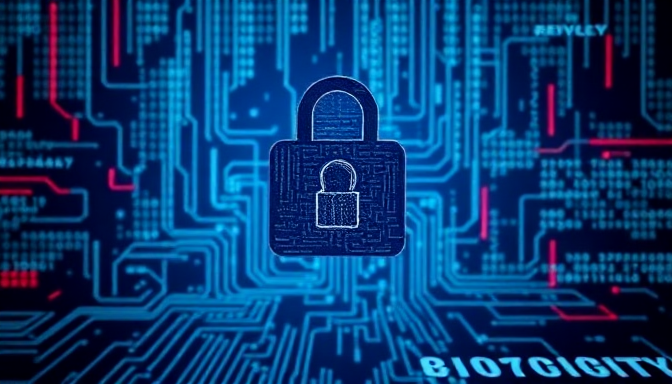
Recognizing the Signs: 'Wait, That Wasn't Me...'
Okay, so you've been merrily clicking links and reusing passwords like it's 1999. One day, you get that little prickle of unease. Maybe it's a notification about a login from a country you've only visited in your questionable search history, or an email thanking you for a purchase you definitely didn't make. That sinking feeling in your stomach? That's the dawning realization that your digital life might have just taken a detour without your permission. Welcome to the "Wait, That Wasn't Me..." club.
These little red flags pop up in the most inconvenient places, naturally. Your bank sends an alert about a massive withdrawal to a Nigerian prince. Your social media is suddenly filled with posts promoting questionable pharmaceuticals, attributed to you. Or perhaps your email inbox is a graveyard of bounce-back messages from phishing attempts sent *from* your account. It's rarely a subtle announcement; more often, it's a series of escalating digital indignities.
Damage Control: Stop Panicking and Start Acting
Alright, so you've had that lovely little moment of realization: something is definitely wrong. Your stomach probably just dropped somewhere around your ankles, and your brain is screaming a non-stop loop of 'Oh god, oh god, oh god'. Excellent. Now, take precisely thirty seconds to wallow in that delightful feeling of impending doom, because after that, it's time to get a grip.
Panicking achieves absolutely nothing in the digital realm except perhaps making you more likely to click on *another* sketchy link out of sheer desperation. The immediate priority isn't assigning blame (that comes later, don't worry), it's containment. Think of yourself as a digital firefighter, except instead of water, you're wielding password resets and network cables. Your first mission: stop the bleeding.
Reporting Incidents: Yes, You Should Tell Someone
Okay, so you messed up. You clicked the thing, opened the attachment, or gave your password to that nice prince in Nigeria. It's embarrassing, I get it. Your first instinct is probably to bury your head in the sand and hope nobody notices your digital underwear is showing. But here's the deal: keeping it quiet doesn't just hurt you; it can potentially allow the same cretins to target others, maybe even people you know or work with. Think of it as stopping a digital contagion, because frankly, your poor online hygiene might be infectious.
So, who do you confess your digital sins to? If this happened on a work account or device, your IT department is step one. Yes, they might sigh dramatically or give you 'the look,' but it's literally their job to deal with your shenanigans. For personal accounts, it depends on the incident. Was it a bank scam? Call the bank. Identity theft? Contact credit bureaus and maybe law enforcement, though managing expectations there is wise. The point is, swallow your pride and tell the relevant people so they can potentially mitigate the damage or, dare I say, learn from your spectacular failure.
Learning from Your Mistakes (Please, For the Love of Data)
Alright, the dust has settled, the panic attack has subsided (hopefully), and your digital life is... less compromised than it was. Now comes the *really* important part, the bit where you actually absorb the painful, expensive, or just plain embarrassing lesson you just received. Seriously, this wasn't just a random act of internet malice; there was likely a trigger, something *you* did or didn't do that opened the door.
Take a hard look at the incident: What email looked *just* convincing enough? Which password was laughably easy to guess? Pinpoint the specific vulnerability, because the internet is absolutely counting on you making the same mistake twice. Learning from this isn't optional; it's the only way to avoid becoming a recurring character in the "Oops, Got Pwned Again" series.
Moving Forward: Slightly Less Vulnerable, Maybe?
Okay, so you survived. You navigated the choppy waters of being pwned and somehow, you're still here, presumably with most of your digital life intact. Consider this a... well, let's call it a 'learning experience,' because 'catastrophic failure' sounds so negative. This doesn't mean you're now a digital ninja, impervious to all threats; it just means you've hopefully absorbed enough pain to avoid the *exact same* mistake next time.
Moving forward isn't about achieving perfect security – that's a myth peddled by people who clearly don't use the internet. It's about making yourself a less appealing target than the person next to you. By implementing the basics we've covered, you've upgraded yourself from 'wide open barn door' to 'slightly ajar window with a flimsy screen'. It's not Fort Knox, but it's progress, right?
Think of cybersecurity not as a destination, but as that annoying relative who keeps showing up uninvited. You can't get rid of it, so you just have to manage the relationship. It requires ongoing attention, updating your defenses as the digital world keeps inventing new ways to mess with you. So, stay vigilant, keep learning, and maybe, just maybe, you'll only get *slightly* pwned next time.
